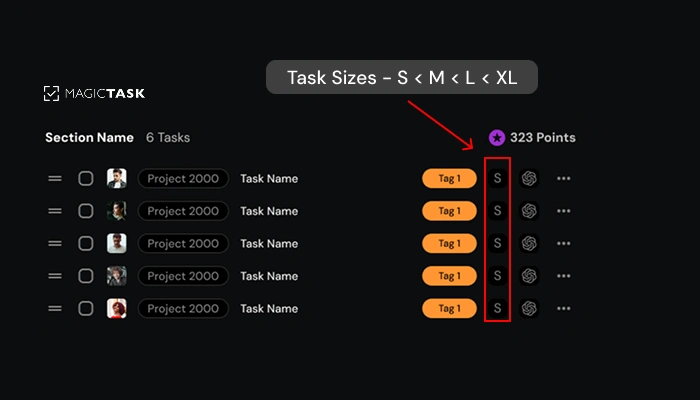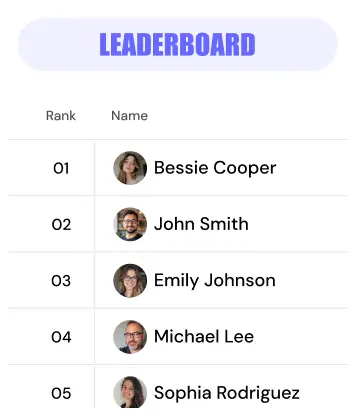Why Your Team Hates Status Update Meetings (And How to Fix It)

You don’t need another meeting to figure out what’s going on. However, status updates keep sneaking onto your calendar, disguised as stand-ups, check-ins, or syncs.
You hop on Zoom, wait for a few late joiners, and sit through 20 minutes of updates that could have been skimmed from a decent dashboard, if one actually existed.
It’s not that your team avoids accountability. They simply don’t have a clear way to indicate what’s been done, what’s in progress, and what’s still pending.
So meetings fill the gap. They stand in for visibility. They replace trust with “just circling back.”
The result? They break focus, kill momentum, and leave everyone wondering why staying aligned takes so much effort.
The real issue isn’t the meeting. It’s how your team tracks and sees its work.
The good news? That part’s fixable.
Let’s break it down.
Why Your Team Hates Meetings?
People don’t hate meetings because of who’s in them. They hate them because of how they’re run.
Status updates, in particular, are repeat offenders when it comes to killing momentum and morale. Here are some reasons why your team hates these status meetings:
1. Constant Interruptions Break Focus
Every time a team member pauses their work to give an update, their mental flow is disrupted.
What looks like a quick “Can you give me a status?” might seem harmless, but cognitively, it’s expensive.
Research found that it takes an average of 23 minutes and 15 seconds to return to deep focus after an interruption.
These interruptions don’t just delay progress; they multiply fatigue.
A developer writing code, a designer working through UI challenges, or a marketer building a campaign brief, all of them rely on uninterrupted time blocks to make meaningful progress. Frequent check-ins chip away at that flow, scattering the day into tiny, disjointed fragments.
Even more frustrating?
These interruptions often happen not because the work isn’t getting done, but because there’s no way to see the work in motion. So the interruptions persist. And that’s where things start to feel personal.

2. Updates That Feel Like Micromanagement
When status updates become too frequent or too specific, they start to feel less like collaboration and more like surveillance.
Even with the best intentions, asking a team member to justify every move can come across as a lack of trust.
And trust, once chipped away, is hard to rebuild.
It’s not that team leads want to micromanage. It’s that the system isn’t giving them confidence that things are progressing. So they lean on manual check-ins to fill the gap.
But that strategy backfires by demotivating the very people doing the work.
Here’s how status updates start to feel like control instead of support:
- “Where are you on this?” feels accusatory without context.
- Daily reports often become a performance log, rather than a progress tool.
- Repeated updates on small tasks imply you don’t trust team autonomy.
- Asking for proof of work drains morale more than it delivers insight.
Eventually, people stop being proactive, not because they’re disengaged, but because they feel like their efforts are constantly under a microscope.
That disengagement leads to the next layer of the problem.
3. Reporting on What’s Already Done
After finishing a task, your team wants to move forward, not circle back to narrate what just happened.
But traditional status update meetings often force precisely that: a recap of work that’s already complete, logged, or visible elsewhere. It’s a cognitive detour that adds no value.
Repetition like this compounds fatigue. Especially for high-performing teams, having to say they did something after they’ve already done it feels like a waste of time.
This backward-looking structure introduces unnecessary friction:
- It breaks the momentum on what matters next.
- It shifts energy from creation to explanation.
- It sends the signal that the work isn’t real until it’s re-reported.
Team members start mentally checking out of update meetings.
And when that happens, the root issue grows: a growing lack of trust in the system itself.
4. Over-Reporting from Lack of Trust
When trust is low, status updates cease to be informative; they become performative.
Team members start over-explaining, over-documenting, and over-sharing in an attempt to prove they’re being productive. Not because they want to, but because the system forces them to.
Instead of confidence in the workflow, you get a culture of self-justification. Every minor update becomes a mini-pitch to defend one’s output. And that slows everything down.
Here’s what this often leads to:
- Excessive tagging in comments to stay visible
- Long Slack messages explaining simple actions
- Duplicating updates across platforms (task manager, chat, meetings)
- Playing defense instead of working forward
This behavior doesn’t stem from laziness or poor communication. It’s a symptom of a broken system.
A system where visibility is earned through repetition, not built into the work itself.
And that’s the heart of the issue: it’s not the team that’s broken. It’s the system that demands constant reassurance.
What a Healthy Status System Looks Like
So if constant updates, interruptions, and over-reporting are the real problems, then what’s the solution? It’s a better system.
A healthy status setup doesn’t rely on nudges, pings, or micromanagement. It creates an environment where progress is visible by default, updates don’t feel like a chore, and your team stays aligned without constant check-ins.
A well-designed task system eliminates the friction of constant check-ins because it’s built around visibility, autonomy, and flow, rather than micromanagement.
When your team knows what’s happening without needing to interrupt each other, productivity rises, trust deepens, and status updates take care of themselves.
Let’s break down what this looks like in practice:
| Element | Traditional Tools | Healthy System Alternative |
|---|---|---|
| Task Visibility | Buried in emails, Slack threads, or docs | Centralised and live inside the actual workflow |
| Progress Feedback | Requires verbal updates or spreadsheets | Auto-updating based on task movement and status |
| Update Mechanism | Real-time meetings, messages, pings | Async check-ins, visible boards, notifications |
| Team Autonomy | Tasks are checked only after follow-ups | Self-managed with trust, minimal oversight |
| System Purpose | Record-keeping and accountability | Collaboration and clarity |
A strong system replaces the need for repetitive status meetings altogether.
By building this visibility directly into the workflow, your team can operate with fewer interruptions and greater intention.
How MagicTask Replaces Annoying Updates with Built-In Visibility
When visibility is built into the system itself, meetings lose their urgency, and micromanagement loses its grip.
That’s not just theory. It’s precisely how MagicTask works in the real world.
Let’s look at how it replaces the need for status updates with something smarter, simpler, and built for how your team works.
1. Sized Tasks, Clearer Expectations
One of the most frustrating parts of traditional status updates is the ambiguity.
A task labeled “Work on landing page” could mean 20 minutes of layout tweaks, or three days of deep copywriting and design.
Without context, managers ask questions. Team members repeat themselves. Everyone loses time.
MagicTask addresses this with a simple yet powerful feature: task sizing.
When every task is labeled as Small (S), Medium (M), Large (L), or Extra-Large (XL), it instantly conveys the scope and effort required. No extra meetings. No long Slack threads.

Here’s how sizing adds instant clarity:
- S: Quick wins like sending an email or fixing a typo.
- M: A focused task, maybe a 30–60 minute work block.
- L: A multi-step item, such as drafting a proposal.
- XL: A project-sized effort, something that spans days and needs to be broken down.
It’s subtle, but incredibly effective.
MagicTask’s clean interface turns this sizing into visual cues, so managers know what’s moving and where attention is needed, without having to ask.
2. Progress That Speaks for Itself
Traditional tools rely on verbal updates or manual status changes to communicate progress. This not only drains time but creates a constant overhead, especially for teams juggling multiple priorities.
MagicTask flips that model. Progress is built into the system itself.
Here’s how it works:
- Each completed task adds points to your profile, contributing to your overall productivity score.
- As you accumulate points, you level up themes, customizable visual environments that evolve as you complete tasks.
- These visible markers of progress remove the need to explain every movement. Everyone, from team leads to individual contributors, can see momentum in action.
No more “What’s the status?” pings.
Instead, the system shows forward motion with clarity and motivation built right in. Points and progress are functional.
They replace verbal check-ins with a system that celebrates consistent work without micromanagement.
3. Clarity Without Calls: Folders and Project Views
Forget scattered boards and messy spreadsheets. Teams can keep work organized by using folders for each project, client, or department. Inside each one, you’ll see:
- What’s active (with task sizes like S, M, L, XL)
- Who’s doing what
- What’s done
- What’s coming up
No more chasing updates or digging through Slack threads. With a quick glance, team leads get a clear view of progress and where help is needed.
It’s alignment without the interruption, clarity without another meeting.
4. One Place for Planning, Prioritizing, and Clearing Mental Clutter
Juggling tasks across sticky notes, chats, and docs is a recipe for chaos, and meetings often become the bandage for that chaos.
MagicTask eliminates the need for scattered systems by giving every team member a unified workspace.
At the heart of this is the Mind Dump feature.
It’s a fast, judgment-free zone to offload everything on your mind, be it ideas, blockers, or reminders, without worrying about categorization.
Once captured, you can turn that mental clutter into organized, actionable tasks.

From there, you can:
- Prioritize using drag-and-drop
- Size tasks for realistic planning (S/M/L/XL)
- Group related work into folders
- Schedule key items on your calendar view
Everything from brainstorming to execution lives in one place, so instead of prepping for meetings, your team is already aligned.
5. Async Flow with Pomodoro and Calendar Integration
Meetings often try to compensate for one thing: disconnection.
When teammates aren’t sure who’s doing what or when, it’s tempting to drop in with a “quick sync.” But those syncs pile up, stealing time and attention.
MagicTask eliminates that need by supporting true asynchronous workflows.
The built-in Pomodoro Timer (feature coming soon) helps individuals focus intensely in short, manageable bursts, with no context switching, no distractions.
When paired with the Calendar Integration, tasks are automatically time-blocked into your day, allowing everyone to work in flow without overlapping or interrupting.
You can:
- See who's in a focused session (and avoid pinging them)
- Auto-sync tasks to your calendar and stay on track
- Run your day with intention, not interruption
This async flow creates a rhythm that respects each team member’s time while keeping everyone aligned. No meetings needed.
What This Looks Like in Practice
Let’s say you’re managing a four-person team working on a product launch. It’s Tuesday morning, and you need a quick status update before reporting to leadership.
Without a system like MagicTask, you'd likely start by pinging each team member individually. Then, schedule a quick standup or Zoom call to gather updates.
Each conversation brings a variation of the same theme, “I’m still working on X”, with little clarity on actual progress. After the call, you're left manually updating your notes, piecing together status reports based on vague responses and incomplete context.
Now compare that with a workflow built inside MagicTask:
- You open the shared project folder
- You see that three tasks moved from “In Progress” to “Done” yesterday
- Two team members earned XP from completing milestone tasks
- One task is marked XL and 60% complete, visible without needing to ask
- Your calendar shows focus blocks synced to upcoming deliverables
No messages. No meetings. Just visibility.
| Situation | Without MagicTask | With MagicTask |
|---|---|---|
| Manager needs updates | Interrupts 4 team members | Opens project folder and sees real-time progress |
| Understanding progress | Relies on vague verbal updates | Visual task progress and point system updates |
| Clarity on next steps | Requires back-and-forth clarification | Subtasks and sizes are clearly mapped out |
| Team experience | Feels micromanaged and disrupted | Feels trusted and uninterrupted |
| Meeting frequency | Daily or frequent check-ins | Reduced or eliminated thanks to built-in visibility |
Conclusion: Don’t Patch the Problem, Replace It
If your team dreads status meetings, the problem isn’t discipline. It’s design. When work is visible, updates take care of themselves. When it’s not, meetings fill the gap.
MagicTask helps you close that gap for good. With real-time visibility built in, your team can stay aligned without the need for constant check-ins or calendar clutter.
Cut the noise. Keep the flow.
Start using MagicTask and make progress the new default.




